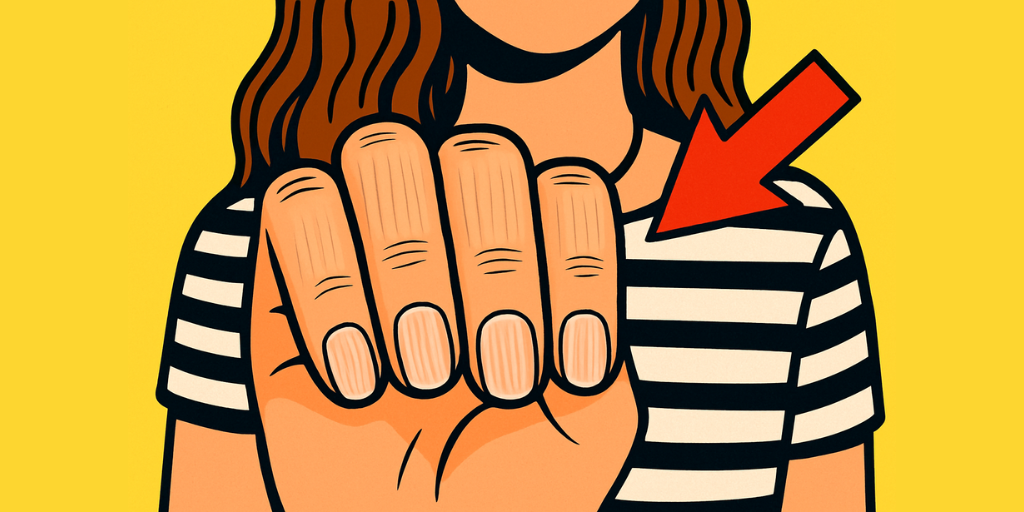
Have you been feeling a bit off lately? Maybe your nails have these strange lines, your hands are always cold even in summer, or your hair seems thinner than it used to be. A lot of people just shrug these things off, thinking they’re just cosmetic issues. But sometimes, these little signs can point to something bigger going on inside your body. Many people, especially women, are walking around with low iodine and don’t even know it. This can mess with your thyroid, slow down your metabolism, and show up in subtle ways on your skin, hair, and nails long before a blood test might catch it.
📌Why Iodine Matters and Why It’s Often Low
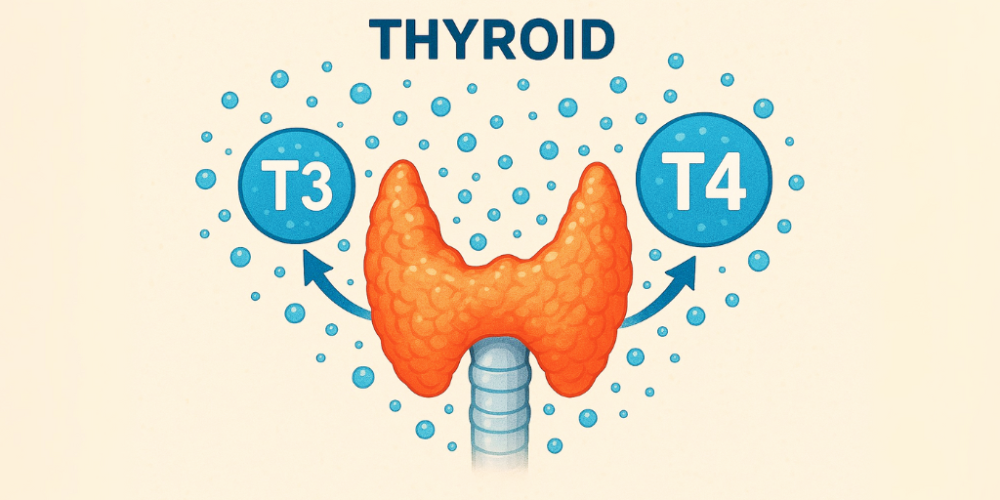
Iodine is a tiny but mighty mineral that your body needs to make thyroid hormones. Think of your thyroid as the main control center for your metabolism. It helps manage your energy levels, body temperature, how fast your cells fix themselves, and even how your skin and hair look. Without enough iodine, your thyroid can’t make the hormones it needs, like T3 and T4, and when that happens, everything in your body can slow down.
Years ago, not getting enough iodine was a big problem. That’s why places like the United States and Australia started putting iodine in table salt. This really helped make sure everyone got enough. But things have changed. A lot of us have cut back on salt because we’re trying to be healthy or are worried about blood pressure. Also, many people have switched to fancier salts like Himalayan salt or sea salt. These salts are fine, and sodium is important for your body, but they usually don’t have added iodine. So, without realizing it, we’re getting less iodine in our diets.
Then there’s the hormone side of things. Women, especially those over 40, are more likely to have thyroid problems. Things like perimenopause, menopause, and even insulin resistance can affect how your thyroid works. If your iodine levels are already low on top of that, your thyroid has an even harder time. The World Health Organization says that over two billion people worldwide aren’t getting enough iodine. This isn’t just in developing countries; even in places like Australia, the United States, Canada, and Europe, mild deficiencies are popping up again. So, even if you eat pretty healthy, you might not be getting enough iodine, especially if you don’t eat a lot of seafood.
Because the signs of low iodine can come on slowly—like feeling tired, having cold hands, or changes in your skin and nails—they often get brushed off as just getting older or being stressed. That’s why it’s so important to notice these subtle signs early, before they turn into bigger issues like hypothyroidism, weight gain, or hormone problems.
⚠️Four Subtle Signs of Low Iodine
👉1. You’re Always Cold
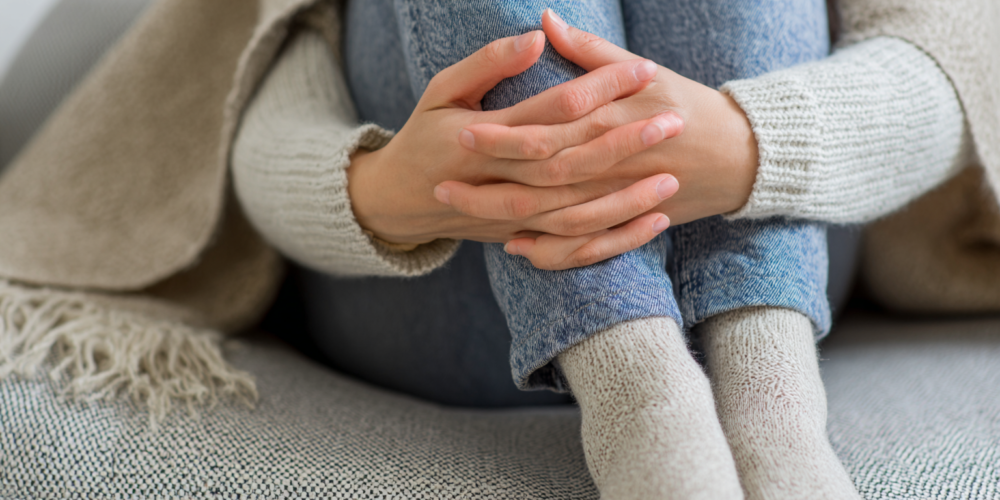
- This is a big one that many women experience without realizing it could be linked to iodine. If you’re constantly cold, especially your hands and feet, it could be a sign that your thyroid isn’t working as well as it should. When iodine is low, your thyroid can’t make enough of the hormones that control your body’s internal temperature. This means your body struggles to make heat, even when it should be able to. You might notice this more in the mornings and evenings when your blood flow slows down. While other things like low iron or poor circulation can also cause this, if you’re also seeing the other signs we’re talking about today, low iodine might be the missing piece. If you’re always chilly, even when it’s not cold outside, your metabolism might be running slow because your thyroid isn’t getting what it needs.
👉2. Vertical Ridges on Your Nails
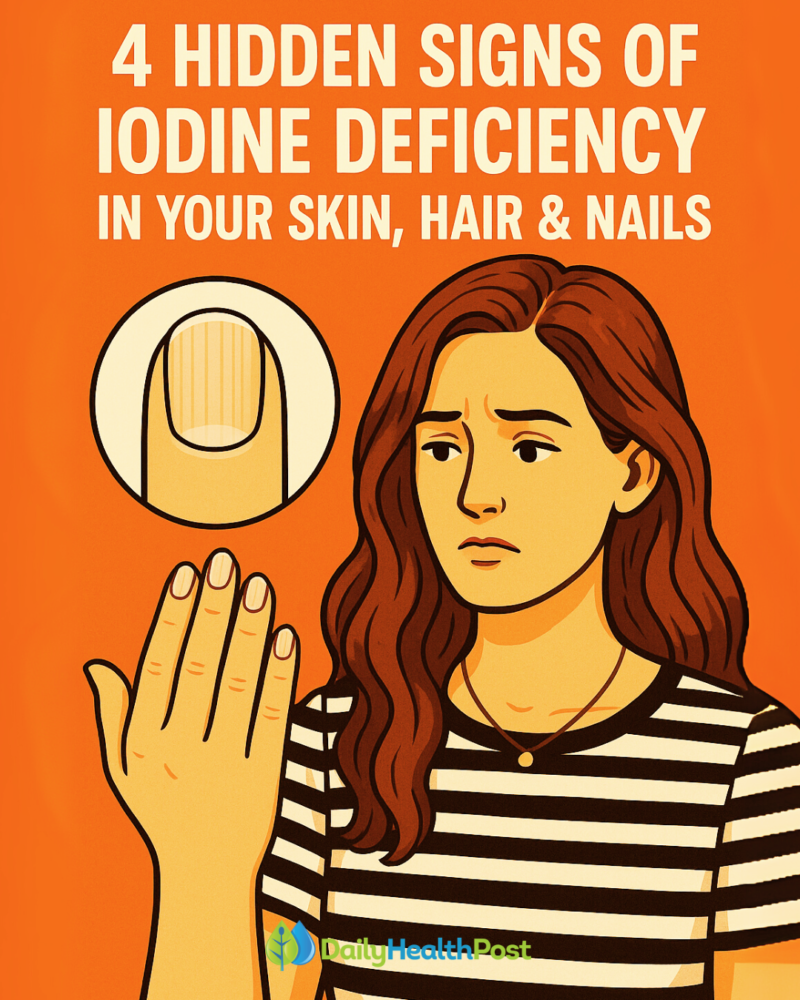
- This is another clear sign that your iodine levels might be off. When your thyroid slows down, so does the speed at which your body makes new cells, including the cells that grow your nails. This can lead to noticeable changes, like vertical ridges running from the base to the tip of your nails, or nails that feel more brittle and break easily. So, if your nails don’t feel as smooth as they used to, or if they break really easily, your iodine could be low.
👉3. Thinning or Brittle Hair

- Many people notice their hair changing but don’t connect it to iodine. Your hair follicles are very sensitive to thyroid hormones. When your iodine levels are low, your thyroid can’t make enough of these hormones, which messes with your hair’s natural growth cycle. This can show up as more hair falling out, especially when you brush your hair or in the shower. Or, your hair might just feel weaker, duller, or thinner than it used to. Maybe your ponytail isn’t as thick, or you have more breakage at the ends. This kind of hair loss isn’t usually dramatic, like male pattern baldness, and because it’s more subtle, it often gets missed.
👉4. Dry or Puffy Skin
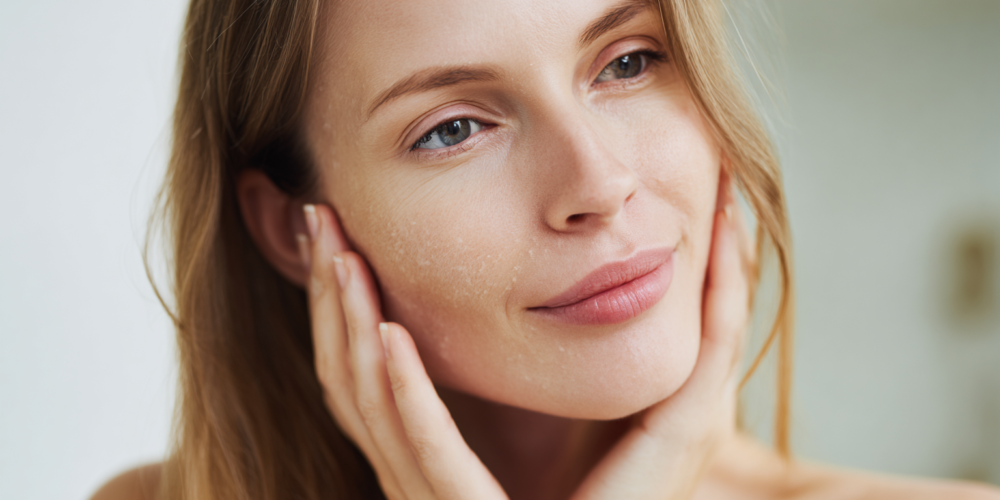
- This can be one of the most frustrating signs because if your skin is dry and your iodine is low, it probably won’t get better with regular creams and lotions. If you’re dealing with dry, flaky skin, or if your face looks really puffy in the morning, low iodine could be the reason. Low iodine can lead to hypothyroidism, which in turn slows down your skin’s ability to renew itself. This means your skin becomes dull, dry, and more likely to look puffy or inflamed. No matter how many serums and creams you try, it just doesn’t improve because the real problem is internal. So, if your skincare routine isn’t working, and you also have cold hands and feet, thinning hair, or nail changes, iodine might be the missing piece.
➡️What You Can Do

If these signs sound familiar and you’re starting to think low iodine might be your problem, let’s talk about what you can do. First, think about iodine in your diet. The best sources of iodine are things like seaweed, seafood, and eggs. But here’s the thing: if you don’t eat seafood regularly, if you’re not using iodized salt, or if you mainly eat whole, unprocessed foods, your levels might already be low. Seafood is really important for iodine; it’s the best source. Eggs have a little bit, so they can help, but if you’re not eating seafood, it’s very likely you’re not getting much iodine.
The good news is you can also take an iodine supplement, and it’s pretty easy to do. A well-known iodine supplement is J. Crow’s Lugol’s Solution. It’s a trusted and pure form of iodine that has been around for many years. The usual recommended amount is two drops per day, which is about 2 to 2.5 milligrams. You can just add it to your water; it’s super easy to fit into your daily routine. What’s good about Lugol’s is that it has both iodine and potassium iodide, which helps support thyroid function from two different angles. So, if you’ve noticed some of the signs we’ve talked about today and you can’t get more iodine through your diet, taking a supplement can help.
Keep an eye on your symptoms over time. If you change your diet or start taking a supplement and notice that your skin, hair, energy, or how warm you feel starts to get better, that’s a good sign you’re on the right track. So, to quickly go over the four signs again: first, always feeling cold, especially your hands and feet; second, vertical ridges on your nails; third, thinning or brittle hair; and fourth, dry or puffy skin. If any of these sound familiar, now might be the time to check your iodine intake. Low iodine can really mess with your metabolism and your thyroid, which can lead to other health problems too.
Source: Kait Malthaner, Health Coach

